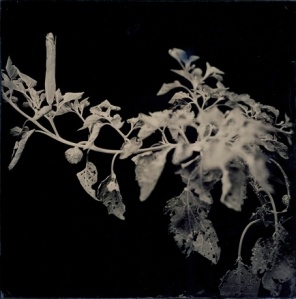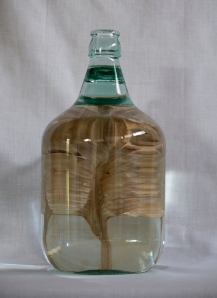Back my questions I posed in an earlier blog and some more; So what makes us want to collect in the first place? What does this trigger within us? And why do we change and become more focussed or specialized? Is collecting like a drug? How do I as an artist with interests of the plant world represent or order this? Do I need to order it? If I do, then how? These things I have pondered over and have found the following...... The collection ‘hobby’ is the modern descendant from the Cabinet of Curiosities, which had its main reasons for increased status and power/dominance over others, while also increasing their knowledge of the ever expanding world. Over the centuries, as more people became wealthier and they had more leisure time, this increased the number of people who started to collect. Collection of antiques, furniture, art were major items for early collections, more recent collections include limited edition cards, figurines, spoons and plates. Most modern collections started slowly either through research first or gathering items that appeal, while gaining knowledge of the particular item they are collecting. Many of us are bitten at some stage in our lives by a collection bug. This collection bug can ‘develop’ into a full blown, obsessive must have thoughts and going to the ends of the earth for that special piece (no different to the early collectors) or can stay very simple, where only the odd piece is added to the collection. A collection is not limited by size for it to be called a collection, neither is it limited by type. While researching and thinking about this blog I came across this blog: http://ronsview.org/2012/03/23/collecting-and-art/. This blog provided me with a good link between collecting and art. As I was reading it I ended up asking myself: ‘when is one both and when is one not? Not sure the answer to this at this stage. The blog talks about an exhibition that was put together by Merril Wright, where she invited friends and some art collectors to present their collection in a gallery space. Reading her blurb about her collection brought to light some interesting questions, questions she herself poses: What is the fine line that defines art? She goes on to describe that some of her pieces can be both art and not. The definition of art and collecting she believes is personal, as all collections are personal in different ways. The blogger in the end sums up collecting really well; “......one can collect without investing much money. What must be invested is time: time to develop an overarching vision, to keep that vision in mind in one’s daily wanderings, to be on the lookout for objects that fill gaps or broaden the vision, and ultimately to curate the collection.” So what makes us want to collect in the first place? What does this trigger within us? Is collecting like a drug? As time has gone on collecting still has similar appeal to when it started as the Cabinet of Curiosities. According to Wikipedia( http://en.wikipedia.org/wiki/Collecting) there are both negative and positive psychological aspects to collecting and I wonder if these same aspects were a consideration in the 16th century. We know that they collected for status and power over others, but did the collectors (both who collected in the field and those who ultimately owned the items) consider these other aspects?Negativeaspects such as:
- Dominance drive - the desire to have power over others, because you have a piece that others want, this knowledge adds to that power.
- Obsession and compulsion - it can become an obsessive hoarding and easily falls into the OCD category.
- Avoidance behaviour - it can provide an escape from daily life/responsibilities
- Compensate for unmet social needs and sexual desires - maybe the daily life does not full fill their needs, collecting maybe able to.
- Hunting and gathering - a survival instinct that appears to manifest itself in many ways in todays modern world.
- Maybe even Management of unconscious fears - this can be event driven from the person’s life.
Other negative aspects I believe exist are:
- Financial ruin - the must have above ensuring daily meets are met
- Complete focus on collecting and forgetting about life responsibilities - this does come under avoidance behaviour, but I believe it goes further.
Reading these why would any of us collect anything or are we completely unaware that we have any of these issues? Maybe we reason them away in favour of the collection.Positive aspects could be:
- Relaxation - winding down from the day
- Pastime - filling up the extra time we now have since those who collect often have financial stability
- Further education & interest in nostalgia and history - the increase in knowledge can be a driver
- Social contact - with the disintegration of families and societies, these groups provide a space where you can meet like minded
- Increased social status amongst peer collectors - this can be both a negative and positive aspect.
I believe creating art is a form of collection, as we collect both imagery and knowledge to create a work or a series of works. Any artist show is a collection of the work produced by that artist, often along a theme or central idea. By removing one piece from that show, you remove it from one collection (the artist series of works) into another, your own. (this is an interesting concept that I had not thought of before writing this blog and may at a later stage revisit) Collecting creates similar responses as taking drugs do: Bidding for the piece in an auction creates similar physiological triggers as a drug does. It makes our heart race when we stumble across a piece that would ‘complete’ our collection. The thrill of the search elevates our thoughts and mood. The adding of the new piece to our collection further elevates the mood hormones and feeling of increased power/status. (If I was to research am sure I would also find artist who have used drugs to create art work - again this is not the scope of this blog) And why do we change and become more focussed or specialized? How do I as an artist with interests of the plant world represent or order this? Do I need to order it? If I do, then how? I believe this is because of our learnings & increased knowledge that we gain while on the path of collecting. The realisation that one particular type, size, shape is more valuable (not only monetary value) or rare, can create more focus.  One artist who appears to has done that using plant material is Karl Blossfeldt. His early obsession with plants, their structure and photography all culminated in his many close up shots of single plant pieces.Over time Blossfeldt standardized his process and many of his images have inspired architecture.While the formality and simplicity of these images provided him with an invaluable teaching tool of forms and patterns for his metal work students.This standardization has created a collection of similar, but not same. The imagery are all from pieces of plants, but not all the same plant. Blossfeldt loose ordering could be a starting point for me, where he has photographed several pieces of same plant, but with some variation in size or development.
One artist who appears to has done that using plant material is Karl Blossfeldt. His early obsession with plants, their structure and photography all culminated in his many close up shots of single plant pieces.Over time Blossfeldt standardized his process and many of his images have inspired architecture.While the formality and simplicity of these images provided him with an invaluable teaching tool of forms and patterns for his metal work students.This standardization has created a collection of similar, but not same. The imagery are all from pieces of plants, but not all the same plant. Blossfeldt loose ordering could be a starting point for me, where he has photographed several pieces of same plant, but with some variation in size or development.
Dipsacus laciniatus - cut leaved teasel
 Another type of order imposed by an artist is in the work LA Botanical by Joyce Campbell. This work is a series of plant portraits. There are several linking and ordering factors in this work, they are:
Another type of order imposed by an artist is in the work LA Botanical by Joyce Campbell. This work is a series of plant portraits. There are several linking and ordering factors in this work, they are:
- All the plants were collected from the City of Los Angeles
- They are plants that the early immigrants would have brought with them when they settled in LA
- The process used to depict these plants, ambryotypes, was invented in 1850, which is also the year that the City of LA was incorporated as a municipality.
- This same process is a silver nitrate process, which links to the silver screen of hollywood
- The accompanying book orders the plants alphabetically
As a botanically inspired artist my ordering can be scientific or otherwise inspired. The ultimate decision should not just be inspirationally driven, but also have a solid research foundation. The Cabinet of Curiosities that started our taste for collecting has to date helped to inform my current work and is still a solid platform for me to work with. Taking into account contemporary reasons for collecting and my current 'Bottles  of Curiosities' I have a broad base to leap from for my next project. References: http://en.wikipedia.org/wiki/Collecting http://ronsview.org/2012/03/23/collecting-and-art/. Blom, Philipp. (2003) To Have and to Hold - an intimate history of collectors and collecting. New York, United States of America. The Overlook Press. LA Botanical (2006-2007) with Essay By Tessa Laird MacGregor . Arthur. (2007) Curiosity and enlightenment; collectors and collections from the sixteenth to the nineteenth century - London, Yale University press. Mauries, Patrick (2002) Cabinets of Curiosities. London, United Kingdom.Thames & Hudson Wilde, Ann & Jurgen., (1997) Karl Blossfeldt: Photography. Germany. Ostfildern.
of Curiosities' I have a broad base to leap from for my next project. References: http://en.wikipedia.org/wiki/Collecting http://ronsview.org/2012/03/23/collecting-and-art/. Blom, Philipp. (2003) To Have and to Hold - an intimate history of collectors and collecting. New York, United States of America. The Overlook Press. LA Botanical (2006-2007) with Essay By Tessa Laird MacGregor . Arthur. (2007) Curiosity and enlightenment; collectors and collections from the sixteenth to the nineteenth century - London, Yale University press. Mauries, Patrick (2002) Cabinets of Curiosities. London, United Kingdom.Thames & Hudson Wilde, Ann & Jurgen., (1997) Karl Blossfeldt: Photography. Germany. Ostfildern.
